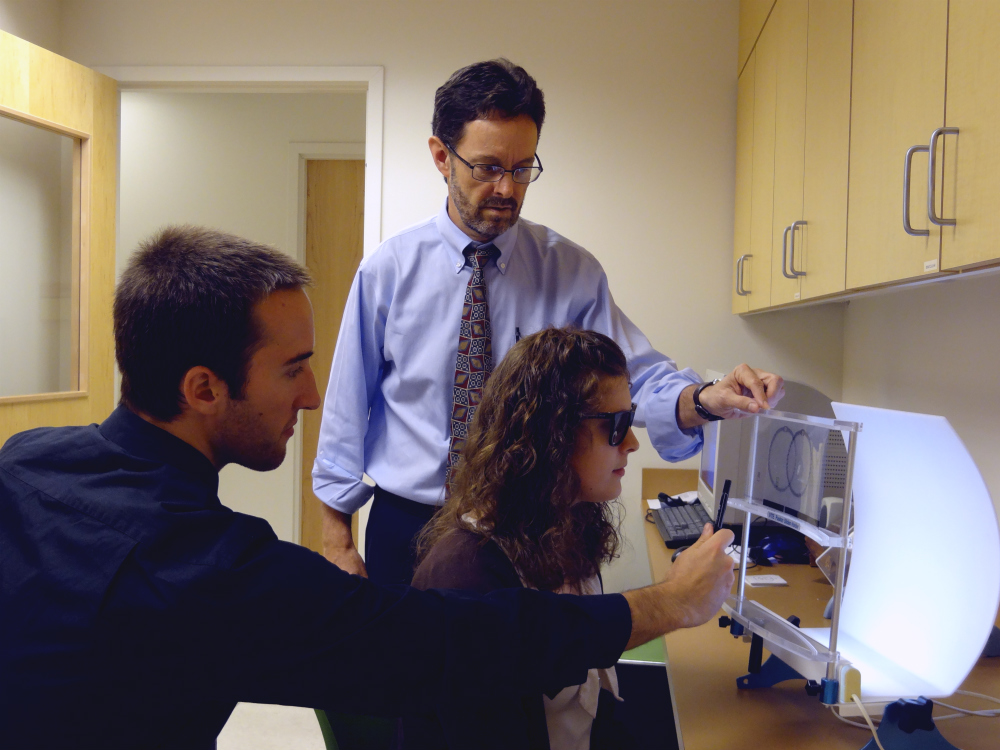The Convergence Insufficiency Treatment Trial (CITT) was a National Eye Institute funded nationwide study that compared various treatments for convergence insufficiency, the most common eye muscle disorder.

The study involved pediatric optometrists and ophthalmologists, and Dr. Gallaway was the Principal Investigator at one of the sites, the Pennsylvania College of Optometry at Salus University. The study results published in 2008 showed that the most effective treatment for convergence insufficiency is office based vision therapy, which is the treatment offered at our office. Home based treatments were no more effective than placebo therapy.
CITT is the most extensive scientific study of vision therapy done to date.
Children in the study who were successfully treated were followed for a year and the results showed that the improvements were long lasting. Children who were successful also showed improvement in academic behaviors such as completing homework and classroom work, as well as attention span and willingness to read.
A Cochrane Review of evidence based treatment for convergence insufficiency reviewed numerous studies and concluded that office based vision therapy is the best treatment. Also, the recent CITT-ART also showed that vision therapy is much more effective than placebo in improving the signs and symptoms of convergence insufficiency.
COVD is the College of Optometrists in Vision Development, the professional organization that board certifies optometrists in vision therapy. COVD has compiled extensive bibliographies of research on vision therapy, vision and learning, vision-based reading problems, and brain injury/concussion.
Clinical Practice Guidelines from the American Optometric Association detail the research support for the care of patients with amblyopia, strabismus, learning-related vision problems, and accommodative and vergence dysfunction.